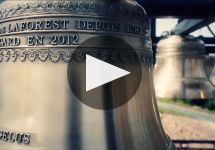Chateau Angelus 2010
-
Robert
Parker -
James
Suckling -
Wine
Spectator -
Wine
Enthusiast



Product Details
Your Rating
Somm Note
Winemaker Notes
This is a classic vintage, amazingly rich and outstandingly precise. It has a deep black colour, strong, pure aromas and an impressive, subtly expressed tannic structure. This lushness combined with its elegant freshness that comes mainly from the beautiful Cabernet Franc grapes, makes this magnificent vintage a very long-keeping wine.
Blend: 55% Merlot, 45% Cabernet Franc
Professional Ratings
-
Robert Parker's Wine Advocate
The deep garnet colored 2010 Angélus is an atomic bomb of powerful fruit scents from the moment the cork is pulled! Boysenberries, stewed plums, blackcurrant cordial and black raspberries all burst from the glass, followed up by nuances of tar, star anise, mocha and unsmoked cigars plus a waft of camphor. The big, rich, full-bodied palate is built like a brick house, featuring super firm, ripe, grainy tannins and tons of freshness to support the taut, muscular black fruits, finishing very long and savory. It's starting to enter its drinking window, but based on this tasting, I would recommend waiting another 3-5 years before broaching and then drinking it over the next 40+ years. Rating: 99+
-
James Suckling
The nose is impressively rich with an opulence and sexiness with earth, berry, spice and chocolate character. Black truffles! Full body, with seamless tannins and beautiful richness. It goes on for minutes. The layers of fruit and ripe tannins are phenomenal. This is the greatest Angelus ever for me.
-
Wine Spectator
Got patience? You'll need it to wait this brute out fully. A chunk of tar sits between you and the core of black currant, hoisin sauce and roasted Black Mission fig fruit flavors, while the back end is a road-paving machine laying down a smoldering tarry track of tobacco and freshly ground coffee. And there's an iron note too, as if this needed it. One of the most backward wines of the vintage. Best from 2017 through 2040.
-
Wine Enthusiast
Firm and tannic, very structured wine, while still savoring its rich fruit character. This feels very opulent and rich. There is a problem with alcohol showing through as a pepper edge.
Barrel Sample: 91-93
Other Vintages
2024-
James
Suckling - Vinous
-
Robert
Parker
-
James
Suckling - Decanter
- Vinous
-
Jeb
Dunnuck -
Robert
Parker
-
James
Suckling -
Jeb
Dunnuck - Decanter
-
Robert
Parker - Vinous
- Decanter
-
Wine
Enthusiast -
James
Suckling -
Robert
Parker -
Jeb
Dunnuck
-
Wine
Enthusiast -
James
Suckling -
Jeb
Dunnuck - Decanter
-
Robert
Parker
-
James
Suckling -
Jeb
Dunnuck - Decanter
-
Robert
Parker
-
Jeb
Dunnuck -
Robert
Parker -
James
Suckling -
Wine
Enthusiast - Decanter
-
Wine
Spectator
-
Jeb
Dunnuck -
James
Suckling -
Wine
Enthusiast - Decanter
-
Wine
Spectator -
Robert
Parker
-
Wine
Enthusiast -
James
Suckling -
Robert
Parker - Decanter
-
Jeb
Dunnuck -
Wine
Spectator
-
James
Suckling -
Robert
Parker -
Jeb
Dunnuck -
Wine
Enthusiast -
Wine
Spectator - Decanter
-
Wine
Enthusiast -
James
Suckling - Decanter
-
Wine
Spectator - Vinous
-
Robert
Parker
-
Wine
Spectator -
Robert
Parker -
Wine
Enthusiast -
James
Suckling
-
James
Suckling -
Jeb
Dunnuck -
Robert
Parker -
Wine
Enthusiast -
Wine
Spectator
-
Robert
Parker -
James
Suckling -
Wine
Spectator -
Wine
Enthusiast
-
Wine
Enthusiast -
Robert
Parker -
Connoisseurs'
Guide -
Wine
Spectator
-
Robert
Parker -
Wine
Spectator -
Wine &
Spirits -
Connoisseurs'
Guide
-
Jeb
Dunnuck -
Robert
Parker -
Wine
Spectator -
Wine &
Spirits -
Connoisseurs'
Guide
-
Robert
Parker -
Wine &
Spirits -
Wine
Spectator
-
Robert
Parker
- Decanter
-
Robert
Parker
-
Robert
Parker -
Jeb
Dunnuck -
Wine
Spectator
-
Robert
Parker
-
Robert
Parker -
Wine &
Spirits -
Wine
Spectator
-
Robert
Parker
-
Robert
Parker -
Wine
Spectator
-
Robert
Parker -
Wine
Spectator
-
Wine
Spectator
-
Robert
Parker
-
Robert
Parker -
Wine
Spectator
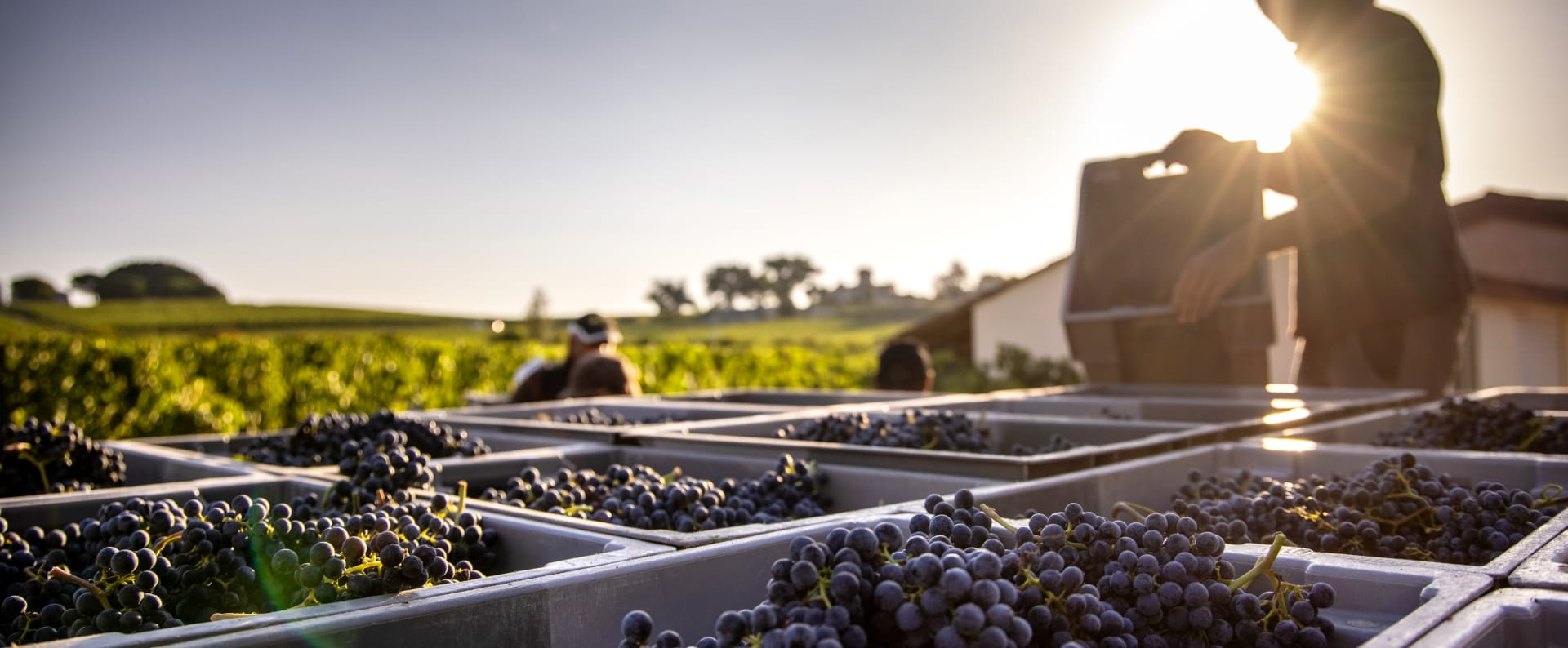
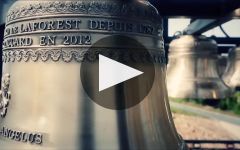
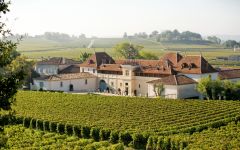
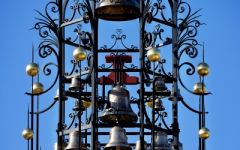
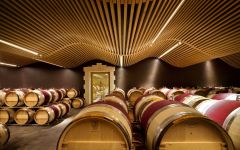
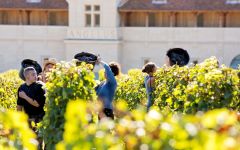
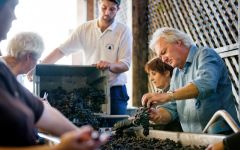
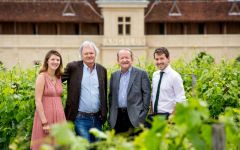

At the origin of Angelus is an exceptionally well-situated vineyard, at the gates to the village of Saint-Émilion, on the famous south-facing "foot of the slope". Since 1782, over the generations, the passion and determination of the de Boüard de Laforest family have built a destiny worthy of the Estate. At 131 hectares including 62 hectares in Saint-Émilion, of which 31 hectares from the historic heart of the Estate, Angelus is now one of the largest vineyards in the appellation. In 2012, after more than thirty years at the helm of Angelus, Hubert de Boüard de Laforest passed the baton to his daughter, Stéphanie de Boüard-Rivoal. She became the third woman in the family's nearly 250-year history to preside over the destiny of this emblematic Estate, ensuring its legacy continues to thrive. Today, Angelus employs 170 people, produces 8 cuvées and owns restaurants and hotels, in particular, the Logis de la Cadène in Saint-Émilion and Le Gabriel in Bordeaux. In 2023, diversification continued with the creation of La Ferme 1544, forming a link between Château Angelus wine business and its restaurants.

One of the world’s most classic and popular styles of red wine, Bordeaux-inspired blends have spread from their homeland in France to nearly every corner of the New World. Typically based on either Cabernet Sauvignon or Merlot and supported by Cabernet Franc, Malbec and Petit Verdot, the best of these are densely hued, fragrant, full of fruit and boast a structure that begs for cellar time. Somm Secret—Blends from Bordeaux are generally earthier compared to those from the New World, which tend to be fruit-dominant.

Marked by its historic fortified village—perhaps the prettiest in all of Bordeaux, the St-Émilion appellation, along with its neighboring village of Pomerol, are leaders in quality on the Right Bank of Bordeaux. These Merlot-dominant red wines (complemented by various amounts of Cabernet Franc and/or Cabernet Sauvignon) remain some of the most admired and collected wines of the world.
St-Émilion has the longest history in wine production in Bordeaux—longer than the Left Bank—dating back to an 8th century monk named Saint Émilion who became a hermit in one of the many limestone caves scattered throughout the area.
Today St-Émilion is made up of hundreds of independent farmers dedicated to the same thing: growing Merlot and Cabernet Franc (and tiny amounts of Cabernet Sauvignon). While always roughly the same blend, the wines of St-Émilion vary considerably depending on the soil upon which they are grown—and the soils do vary considerably throughout the region.
The chateaux with the highest classification (Premier Grand Cru Classés) are on gravel-rich soils or steep, clay-limestone hillsides. There are only four given the highest rank, called Premier Grand Cru Classés A (Chateau Cheval Blanc, Ausone, Angélus, Pavie) and 14 are Premier Grand Cru Classés B. Much of the rest of the vineyards in the appellation are on flatter land where the soils are a mix of gravel, sand and alluvial matter.
Great wines from St-Émilion will be deep in color, and might have characteristics of blackberry liqueur, black raspberry, licorice, chocolate, grilled meat, earth or truffles. They will be bold, layered and lush.
